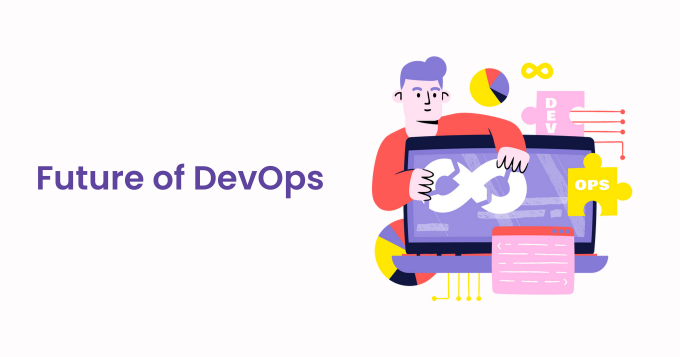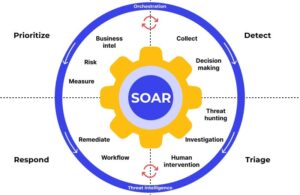The Future of Work: Adapting to a Hybrid Digital Lifestyle
In recent years, the workplace has undergone a significant transformation, propelled by technological advancements and global events that necessitated flexibility and adaptability. The concept of a hybrid digital lifestyle has emerged, where employees balance in-office presence with remote work. This new paradigm has implications for productivity, collaboration, and employee satisfaction. As organizations reevaluate their operational models, understanding the nuances of a hybrid digital lifestyle is essential to thrive in this evolving landscape.
Understanding the Hybrid Digital Lifestyle in the Workplace
The hybrid digital lifestyle in the workplace refers to a blend of traditional office settings with digital, remote work environments. Employees today are no longer confined to their desks, nor are they required to be physically present in an office to contribute effectively. Instead, they navigate multiple workspaces, harnessing digital tools to operate seamlessly between locations. This lifestyle amplifies flexibility, allowing individuals to tailor their work environments to suit their needs, whether that be from home, cafes, or co-working spaces.
Organizations adopting this model must recognize the importance of clear communication and transparent policies to manage diverse work arrangements. A well-structured hybrid work policy can enhance employee trust and engagement while navigating the complexities of disparate locations. Moreover, understanding that flexibility is not just a perk, but a driver of productivity, can lead to innovative strategies that support workforce wellness and cohesion. As companies adapt to this hybrid model, they should prioritize inclusivity to ensure that all employees feel valued, regardless of their work environment.
The rise of the hybrid digital lifestyle also underscores the need for a cultural shift within organizations. Traditional leadership models that emphasize visibility and in-person management need to evolve to accommodate a dispersed workforce. Effective leadership in a hybrid setting hinges on fostering a culture of accountability and empowerment, enabling employees to take ownership of their tasks. It’s imperative for leaders to cultivate an environment that celebrates results rather than mere activity, focusing on outcomes that align with organizational goals.
Key Trends Shaping the Future of Work Environments
As we venture deeper into this new working landscape, several key trends are defining the future of work environments. Firstly, the integration of artificial intelligence (AI) and automation is changing how tasks are executed, streamlining processes, and enhancing efficiency. Organizations are increasingly relying on AI-driven tools to manage workflows, recruit talent, and analyze performance data, leading to improved decision-making and operational agility.
Another trend shaping the future of work is the rise of the gig economy, where professionals pursue freelance projects or short-term contracts rather than traditional full-time roles. This shift is transforming employment relationships, allowing companies to tap into diverse skill sets and respond quickly to changes in market demands. Workforce fluidity promotes agile project management, enabling teams to scale up or down as required while ensuring relevant expertise is always on hand.
Lastly, an increased focus on employee well-being is influencing work environments everywhere. The COVID-19 pandemic underscored the importance of mental health and work-life balance, prompting organizations to implement wellness programs and promote a supportive workplace culture. This trend is not just about retention; it is about attracting top talent by offering an organizational ethos that prioritizes the overall health and satisfaction of their employees.
The Role of Technology in Hybrid Work Models
Technology serves as the backbone of hybrid work models, facilitating seamless communication and collaboration among remote and on-site employees. Cloud-based platforms and collaboration tools, such as Microsoft Teams, Slack, and Zoom, have become integral to daily operations, enabling teams to connect and share information in real time. These tools not only transcend geographical boundaries but also foster engagement and unity within teams, reinforcing a shared sense of purpose despite physical distance.
Moreover, technology plays a crucial role in maintaining productivity in a hybrid workforce. Project management software and performance tracking tools enable organizations to monitor progress and meet deadlines, facilitating accountability without micromanagement. This use of technology allows employees to prioritize their responsibilities and manage time effectively, contributing to higher levels of job satisfaction and output. As organizations embrace these tools, they must invest in training and support to ensure employees are equipped to leverage the full potential of technology.
Finally, cybersecurity considerations are becoming increasingly prominent within hybrid work models. With employees accessing corporate networks from various locations, the risk of data breaches and cyber threats rises significantly. Organizations must prioritize robust security protocols and employee training on safe digital practices to protect sensitive information. The implementation of zero-trust models and multifactor authentication can help safeguard company data while empowering employees to work securely in a hybrid environment.
Benefits and Challenges of a Hybrid Workforce
A hybrid workforce offers numerous benefits, one of the most significant being increased flexibility. Employees can tailor their schedules to integrate personal commitments, leading to enhanced job satisfaction and reduced burnout. This flexibility can improve retention rates, as employees feel valued and empowered to balance their professional and personal lives. Additionally, organizations are increasingly realizing that a diverse talent pool can contribute to enhanced innovation and problem-solving, as different perspectives coalesce in both physical and digital spaces.
However, the hybrid workforce model is not without its challenges. Organizations must grapple with potential issues such as isolation among remote workers, which can lead to decreased morale and engagement. The lack of spontaneous interactions found in traditional office settings may hinder team bonding and collaborative creativity. To foster a sense of unity, organizations must be proactive in creating opportunities for social connection and team-building, whether through virtual events or scheduled in-office days.
Another significant challenge is ensuring equitable access to resources and opportunities for all employees, regardless of their work location. Companies must develop policies that bridge the digital divide and promote fairness in career advancement for remote workers. This includes addressing potential biases in performance evaluations and ensuring that remote employees are provided equal access to training, mentorship, and networking opportunities. A commitment to equity will be crucial as organizations navigate the evolving landscape of hybrid work.
Best Practices for Effective Remote Collaboration
To optimize remote collaboration in a hybrid work environment, organizations should implement structured guidelines and best practices. Establishing clear communication protocols that delineate when to use various tools—like instant messaging versus video calls—can enhance overall efficiency. Regular check-ins and updates help create a rhythm that promotes accountability and encourages feedback, fostering an atmosphere of trust and collaboration.
Developing a culture of inclusivity is also essential. Leaders must be vigilant in ensuring that all team members are included in discussions and decisions, regardless of their physical location. This ongoing engagement can be achieved through inclusive meeting practices, such as rotating facilitators, and leveraging technology to ensure everyone’s voices are heard. Furthermore, cultivating a feedback-rich environment encourages employees to share thoughts on processes, which can lead to innovative solutions and a more cohesive team dynamic.
Finally, organizations should invest in training and development tailored to remote work challenges. Equipping employees with skills in time management, effective virtual communication, and project management can significantly enhance their effectiveness in a hybrid setting. Providing resources for professional growth not only boosts productivity but also demonstrates a commitment to employee development, positively impacting morale and overall job satisfaction.
Preparing for Changes in Employee Engagement Strategies
As the dynamics of work evolve, so too must the strategies for engaging employees. Traditional methods may no longer resonate in a hybrid environment; thus, organizations should explore innovative avenues to foster engagement. Regular feedback loops, pulse surveys, and open forums for discussion can encourage employees to voice their needs and concerns, ultimately enhancing their commitment to the organization.
Moreover, companies should tailor engagement initiatives to accommodate both remote and in-office workers. This could involve hybrid team-building activities that ensure everyone feels included and valued, regardless of their location. Virtual coffee breaks or wellness challenges can create opportunities for informal interactions, bolstering team spirit and creating lasting connections that bridge the gap between physical and digital presence.
In addition, it’s imperative to recognize and reward achievements in creative ways that resonate with the modern workforce. Celebrating both individual and team accomplishments in hybrid settings cultivates a sense of belonging and reinforces organizational values. By evolving employee engagement strategies, organizations can maintain productivity and morale in a world where work is no longer confined to a single location.
The Importance of Digital Skills in the New Era of Work
The rapid shift toward hybrid work has underscored the necessity for employees to possess robust digital skills. As organizations increasingly rely on cloud technologies, collaboration tools, and digital platforms, the ability to navigate these resources has become paramount. Employers benefit from a workforce well-versed in digital literacy, enhancing both operational efficiency and their overall competitive edge in the market.
To support the development of these crucial skills, organizations should prioritize continuous learning and provide access to training programs. Workshops, online courses, and mentorship opportunities can empower employees to enhance their digital proficiency effectively. Creating a culture that embraces lifelong learning will not only bolster employee confidence but also equip organizations to adapt to ongoing technological advancements.
Furthermore, enhancing digital skills among employees benefits the entire organization. A digitally skilled workforce can quickly adopt new technologies, leading to faster project completions and improved innovation. Fostering an adaptable workforce will ensure that organizations remain agile in the face of evolving digital landscapes, ultimately driving long-term success in the hybrid era of work.
As we stand on the brink of a new era characterized by the hybrid digital lifestyle, organizations must embrace flexible work models and the accompanying challenges. By understanding the benefits and challenges of hybrid work, investing in technology, fostering effective remote collaboration, and prioritizing digital skills, companies can adapt and thrive in this evolving landscape. The future of work harbors tremendous potential for those willing to innovate, placing employee well-being and collaboration at the forefront of organizational strategy. As we navigate the complexities of this hybrid landscape, embracing change and equipping teams for success will be critical in shaping a more connected and productive workforce.













Post Comment